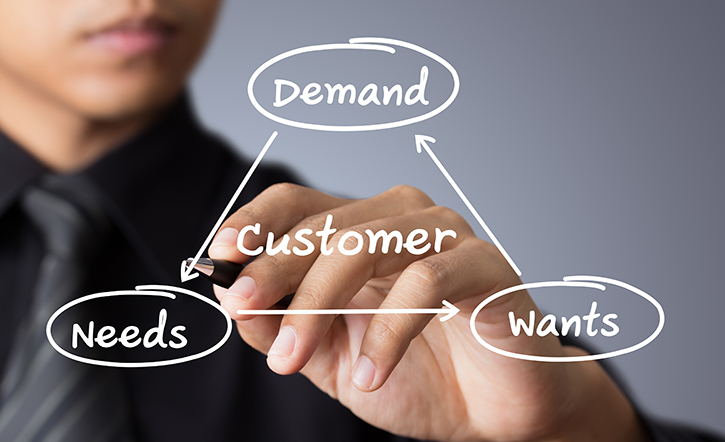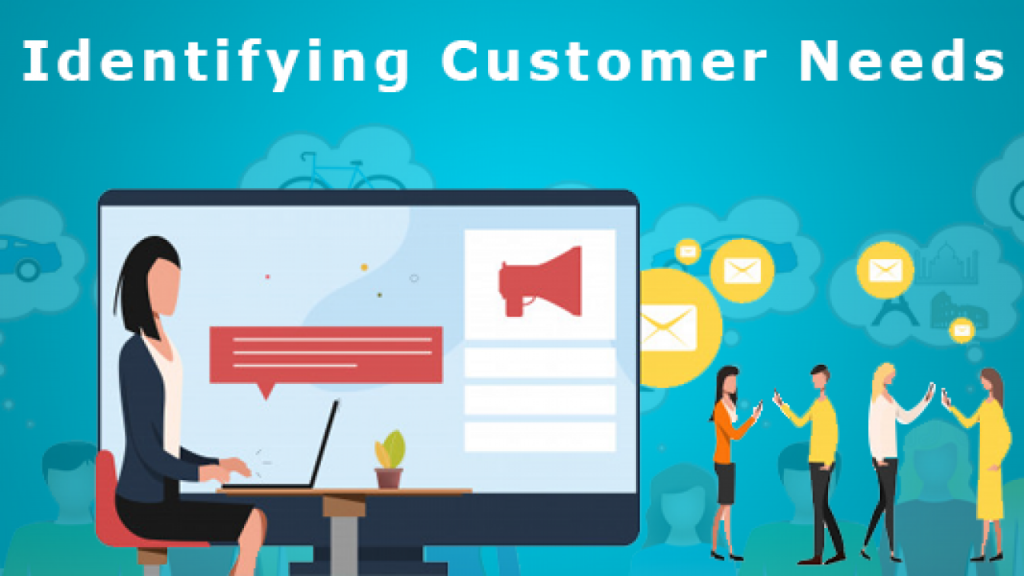22 Oct

Identifying and Meeting Customer Needs
For a business identifying customers need is the most important yet critical mission because a business is nothing without a customer.
A customer is one who has the ability to determine your business longevity and progress. Hence everyone wants to attract customers to their site. Regardless of knowing that customer plays a vital role in growth of your business many of the business owners don’t pay attention in any sort of customer’s need.
Let’s dive into identifying and meeting customer needs.
What are customer needs?
A customer need is a motive that prompts a shopper to buy a product or service. Ultimately, the need is the driver of the customer’s purchase decision. Companies often look at the buyers need as an opportunity to resolve or contribute surplus value back to the original motive.
They’re the physical and psychological motivators that cause customers to buy a particular product or service. Let’s narrow down these two types of customer needs.

Physical VS Psychological
Physical needs are easier to understand in comparison to psychological as psychological needs only exist in your mind. Physical needs are basically the necessity like, you are hungry and you want food, you are feeling cold and you want a jacket.
Physical needs are at the bottom of the pyramid for why a client seeks out a product or service.
On the other hand in some of the cases, a customer doesn’t actually have a physical need but while scrolling down they get attracted to something cute or interesting and ends up buying it this is called psychological need.
How to meet customer needs?
Here are some ways by which you can meet customer needs.
1. Customer feedback
This is the easiest way to know what customer likes and what not. Most of the world’s biggest companies also use this way to meet the needs of a buyer.
Many users ask for their iPhone, iPad, Apple Watch and Macbook to have richer functionality and better design, and Apple also delivers.
There are several ways you can get feedback from your customers. Some of the frequent used methods are:
Surveys:
You can conduct surveys in person, via phone, or by using an online survey tool like Typeform. It would be great to use open ended questions to see what’s on their mind instead of giving a list of options to choose from.
Example: What other features are you looking forward to see in our products?
Interviews:
Interviewing some of your existing customers by one-on-one setting can be a great way to know what they are looking for. Questions like these can be helpful while studying about a customers need.
Example: What do you feel is missing from our product?
Social listening:
This is the most powerful platform now days. Most of the people often speak their hearts out about any product or service on Social media like Facebook, Instagram and Twitter. Keeping an eye on their frustration and opinions will benefit you in knowing where your business is lacking. With tools like Keyhole you can easily get to know who have mentioned your business online.

2. Keep an eye on your competitors
Analyzing your competitors and paying attention on them is one of the key points. As with the increased use of internet, online shopping is also common now. Hence you are not only competing with your nearby business.
Even business from other countries can identify and meet the needs of a customer. Therefore it’s essential to stay up to date about what others are doing in market and which of their offer is most liked by the customers.
3. Create a “Customer Needs Statement”
A customer needs statement is used in customer service, marketing, and product development to offer in detail overview of the client It is helpful to ensure that the product offers the feature and benefits required by a customer.
You can say it is a customer need analysis that is beneficial to identify and fulfill the requirements that a customer have. However, there are no strict rules for how this statement should look. It should cover following things about your customer.
1. Who they are: It’s always helpful to know details like the customer’s age, gender, marital status, and location.
2. Why they buy: If you can understand the motivations behind their purchase, you’ll find it easier to tie customer needs to the benefits your company can offer.
3. How they buy: Some customers prefer to shop from a company’s website, while others prefer to visit their store.
4. How much they can afford to spend: You’ll have a much better chance of meeting customer needs if you can match your offer to what they can afford.
5. What they expect from you: For instance, if your customers expect fast shipping and you give it to them, they’re much more likely to come back and buy from you again.
6. What makes them tick: If you know what makes customers feel good about buying from your company, you can cater to their needs in the way they prefer.
All this data can be gathered by looking at the purchase history of customer or conducting surveys.
4. Plan How to Implement Customer Needs into Your Operations
Once you have all the insight data, now this is the time to take action. Focus on what to do and how to improve.
For example, let’s say that you have a customer who wants to know about a specific feature of your product, but they’ve expressed frustration about the long back-and-forth with your customer service team.
In this case Live Chat option will allow you to meet customers need and save your time. FAQ is also a great option to opt for.
Conclusion
Whenever you start a business, the starting point is to fully understand what are customer needs and how can you meet them. As customers are vital component to grow your business. Having good knowledge of customer needs and wants not only helps to add constructive value but also level up the overall brand recognition. It gives your business a competitive advantage and stays a step ahead in the market.
Good luck in identifying and meeting customer needs.